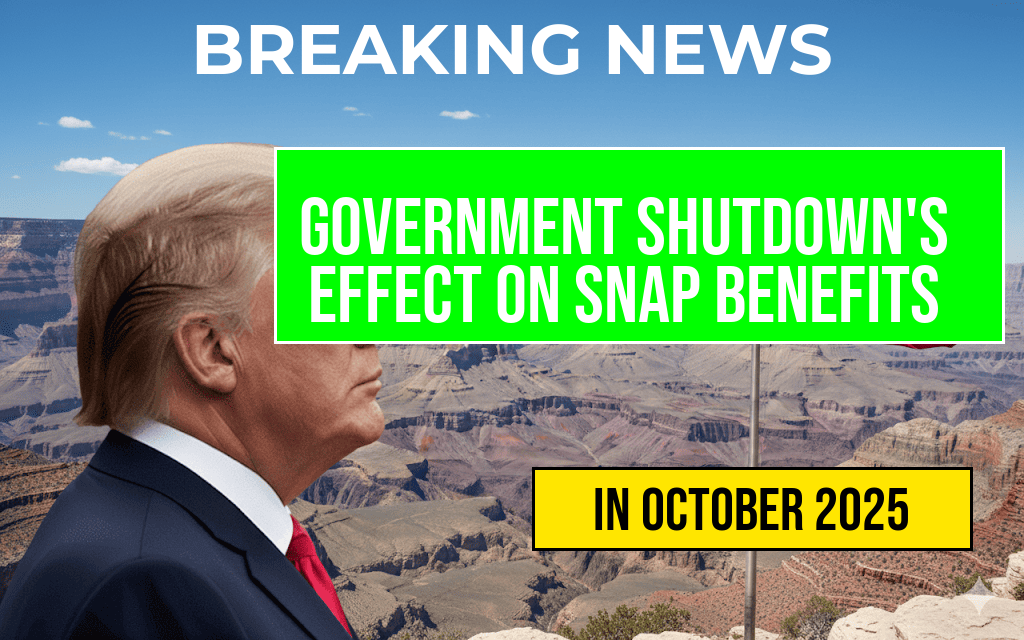The recent government shutdown has raised significant concerns regarding the future of the Supplemental Nutrition Assistance Program (SNAP) and food stamp benefits, which provide essential assistance to millions of Americans. With funding for these programs dependent on federal appropriations, the shutdown has created uncertainty about the availability of benefits for low-income families. As the political stalemate continues, many recipients are left wondering how long their support will last and what measures may be taken to address the potential disruptions in service. This article explores the implications of the government shutdown on SNAP benefits and food stamp programs, as well as the potential consequences for vulnerable populations across the country.
Understanding SNAP and Food Stamp Programs
SNAP, commonly known as food stamps, is a federal program designed to alleviate hunger and improve nutrition among low-income individuals and families. The program provides financial assistance to purchase food, ensuring that beneficiaries can maintain an adequate diet. As of 2023, around 41 million Americans rely on SNAP for their food needs, making it a critical lifeline for many households.
Effects of the Government Shutdown on SNAP Operations
During a government shutdown, federal agencies face funding shortages, which can directly impact the administration of SNAP and other food assistance programs. The U.S. Department of Agriculture (USDA), which oversees SNAP, may experience disruptions in processing applications, managing benefits, and providing support services. The following are some potential effects of the shutdown:
- Delayed benefit distribution: In the event of a prolonged shutdown, processing delays could occur, affecting timely benefit disbursement for current recipients.
- Application processing slowdowns: New applicants may face significant delays in receiving assistance, leaving them without necessary resources during a critical time.
- Potential funding shortages: While existing benefits may be funded temporarily, uncertainty looms over the availability of future funding, leading to concerns about sustainability.
Impact on Vulnerable Populations
The repercussions of the government shutdown are particularly severe for vulnerable populations that rely heavily on food assistance. Many SNAP recipients are low-income families, children, the elderly, and individuals with disabilities. The following groups may be disproportionately affected:
- Children: With many families depending on SNAP benefits to provide meals for their children, disruptions could lead to increased food insecurity among youth.
- Senior citizens: Older adults often have fixed incomes and fewer resources, making them reliant on food assistance for their nutritional needs.
- Individuals with disabilities: This population may already face challenges in accessing food, and a shutdown only exacerbates their difficulties.
Government Response and Future Outlook
In light of the shutdown, government officials have been exploring various measures to mitigate the impact on SNAP recipients. Some potential strategies include:
- Emergency funding measures: Lawmakers may propose temporary funding solutions to ensure SNAP benefits continue without interruption.
- State-level interventions: States may implement contingency plans to address immediate needs, ensuring that vulnerable populations receive support during the shutdown.
- Public awareness campaigns: Efforts to inform recipients about their rights and available resources may help alleviate some of the challenges faced during this period.
Conclusion
The ongoing government shutdown poses significant challenges for the SNAP and food stamp programs, leaving millions of Americans uncertain about their food security. As the situation evolves, the focus remains on finding solutions that will safeguard the welfare of those who depend on these vital assistance programs. Stakeholders, including lawmakers, state officials, and nonprofit organizations, must work collaboratively to address the needs of vulnerable populations and ensure that food assistance remains accessible during these challenging times.
| Year | Participants (Millions) | Annual Expenditure (Billion USD) |
|---|---|---|
| 2021 | 42 | 113 |
| 2022 | 41.5 | 112 |
| 2023 | 41 | 110 |
For more information on SNAP benefits and the effects of government actions, visit the USDA SNAP website or explore the Center on Budget and Policy Priorities for in-depth analysis.
Frequently Asked Questions
Will a government shutdown affect my SNAP benefits?
Yes, a government shutdown can impact SNAP benefits. During a shutdown, funding for the program may be delayed, which could affect the timely distribution of benefits to recipients.
What happens to food stamp programs during a government shutdown?
During a government shutdown, food stamp programs may continue to operate temporarily, but future benefits may be at risk if the shutdown extends for an extended period.
Can I still apply for SNAP during a government shutdown?
Yes, you can still apply for SNAP benefits during a government shutdown, but processing times may be longer due to reduced staffing and resources.
Are emergency SNAP benefits affected by a government shutdown?
Yes, emergency SNAP benefits, which are designed to help during crises, may be delayed or disrupted during a government shutdown, depending on the duration and severity of the shutdown.
How can I find out if my SNAP benefits will be impacted?
To find out if your SNAP benefits will be impacted, you should check with your local SNAP office or visit the official state website for updates regarding government operations and program status.

Leave a Reply